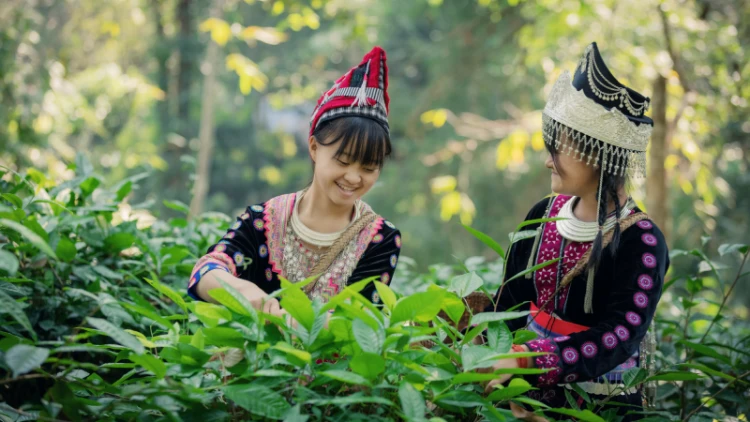Darjeeling, a picturesque hill station in the Himalayas, is not only known for its stunning landscapes and tea gardens but also for its rich cultural heritage. The traditional dress and culture of Darjeeling reflect the diverse communities that call this region home, including the Nepali, Tibetan, Lepcha, and Bengali communities. In this guide, we’ll explore the traditional attire, cultural practices, and festivals that make Darjeeling a vibrant and unique destination.
Why Traditional Dress and Culture Matter in Darjeeling
The traditional dress and culture of Darjeeling are more than just symbols of identity; they are a living testament to the region’s history, values, and way of life. Here’s why they are significant:
- Cultural Identity: Traditional attire and customs help preserve the unique identity of each community.
- Tourist Attraction: The vibrant clothing and cultural practices attract visitors from around the world.
- Community Bonding: Festivals and cultural events bring people together, fostering a sense of unity.
- Heritage Preservation: By embracing traditional dress and culture, the people of Darjeeling keep their heritage alive for future generations.
Traditional Dress of Darjeeling
The traditional dress of Darjeeling varies among its different communities. Here’s a detailed look at the attire worn by the major groups:
1. Nepali Community
- Men: The traditional attire for men is the daura-suruwal, a knee-length shirt (daura) paired with fitted trousers (suruwal). It is often accompanied by a dhaka topi (a traditional Nepali hat) and a patuka (cloth belt).
- Women: Women wear a chaubandi cholo (a blouse with ties) and a gunyu or sari (a long skirt or draped cloth). They also adorn themselves with gold and silver jewelry, such as naugedi (nose rings) and tilhari (necklaces).
- Occasions: This attire is worn during festivals like Dashain and Tihar, as well as weddings and cultural events.
2. Tibetan Community
- Men: Men wear a chuba, a long robe tied at the waist with a sash. It is often made of wool to protect against the cold.
- Women: Women also wear the chuba, but it is often more colorful and decorated with intricate patterns. They accessorize with perak (a traditional headdress) and coral or turquoise jewelry.
- Occasions: The chuba is worn during Losar (Tibetan New Year) and other religious ceremonies.
3. Lepcha Community
- Men: Men wear a thokro-dum (a white cloth wrapped around the body) and a pagi (headgear).
- Women: Women wear a dumvun (a long dress) and a tago (headscarf). They also wear silver jewelry, such as earrings and bangles.
- Occasions: This attire is worn during festivals like Tendong Lho Rum Faat and other cultural events.
4. Bengali Community
- Men: Men wear a dhoti (a draped cloth) and a panjabi (a long shirt).
- Women: Women wear a sari or salwar kameez, often made of silk or cotton. They accessorize with gold jewelry, such as bangles and necklaces.
- Occasions: This attire is worn during Durga Puja and other Bengali festivals.
Cultural Practices and Traditions
The culture of Darjeeling is a blend of traditions, rituals, and artistic expressions. Here are some key aspects:
1. Festivals
- Dashain and Tihar: Celebrated by the Nepali community, these festivals involve prayers, feasts, and cultural performances.
- Losar: The Tibetan New Year is marked by prayers, dances, and traditional meals.
- Durga Puja: The Bengali community celebrates this festival with grand processions, music, and dance.
2. Music and Dance
- Nepali Folk Music: Instruments like the madal (drum) and sarangi (string instrument) are used in traditional Nepali music.
- Tibetan Chants: Monks perform spiritual chants and dances during religious ceremonies.
- Lepcha Folk Dances: Traditional dances like Chu Faat are performed during festivals.
3. Art and Craft
- Thangka Paintings: Intricate Buddhist paintings depicting deities and mandalas.
- Handwoven Textiles: Woolen shawls, carpets, and traditional dresses made by local artisans.
- Bamboo and Cane Products: Eco-friendly items like baskets and furniture.
How to Experience Traditional Dress and Culture in Darjeeling
Here are some ways to immerse yourself in the traditional dress and culture of Darjeeling:
- Attend Festivals: Participate in festivals like Dashain, Losar, and Durga Puja to witness traditional attire and cultural performances.
- Visit Monasteries: Explore monasteries like Bhutia Busty and Ghoom to learn about Tibetan culture and art.
- Shop for Traditional Attire: Visit local markets to buy traditional clothing and accessories.
- Interact with Locals: Engage with residents to learn about their customs and traditions.
Personal Experience: Embracing Darjeeling’s Culture
During my visit to Darjeeling, I had the opportunity to attend a Nepali wedding. The bride and groom were dressed in stunning traditional attire, and the ceremony was filled with music, dance, and delicious food. I also visited a Tibetan monastery during Losar, where I witnessed the Cham dance and enjoyed butter tea. These experiences gave me a deeper appreciation for the rich cultural heritage of Darjeeling.
Frequently Asked Questions (FAQs)
1. Can tourists wear traditional attire in Darjeeling?
Yes, tourists are welcome to wear traditional attire, especially during festivals. Locals appreciate the effort to embrace their culture.
2. Where can I buy traditional clothing in Darjeeling?
You can find traditional clothing at markets like Chowk Bazaar and Mall Road, as well as at specialized shops.
3. What is the best time to experience Darjeeling’s culture?
The best time is during major festivals like Dashain (September-October), Losar (February-March), and Durga Puja (October).
4. Are there any cultural workshops for tourists?
Some monasteries and cultural centers offer workshops on traditional art, dance, and music. Check with local tour operators for details.
Conclusion
The traditional dress and culture of Darjeeling are a vibrant reflection of its diverse communities and rich heritage. From the colorful attire of the Nepali and Tibetan communities to the intricate art and music, every aspect of Darjeeling’s culture tells a story. By immersing yourself in these traditions, you can gain a deeper understanding of the region and create unforgettable memories. So, pack your bags, embrace the local culture, and get ready to explore the enchanting world of Darjeeling!

